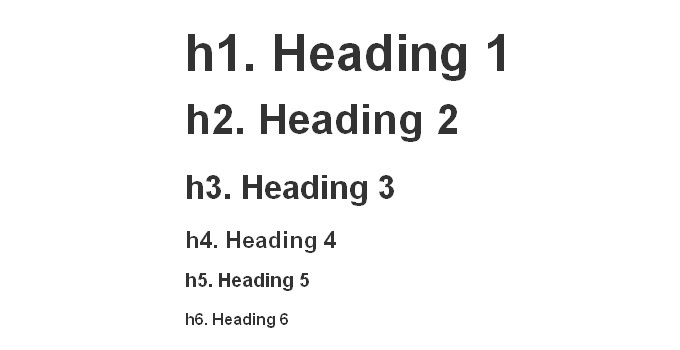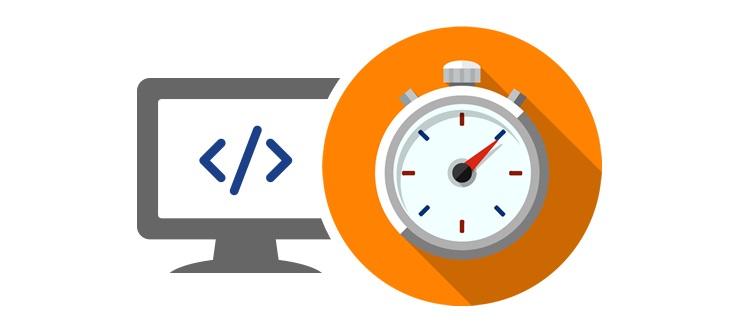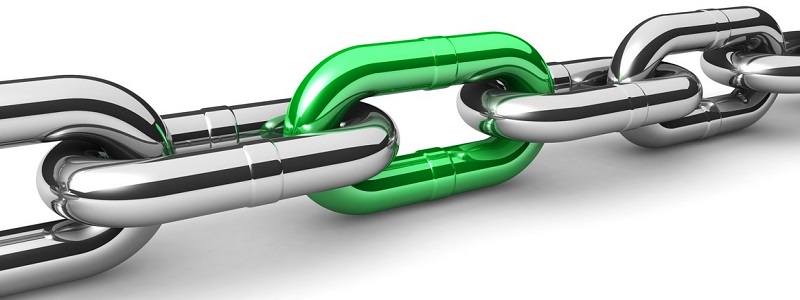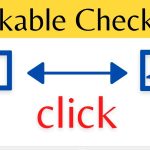Regardless of whether you noticed a complete fallout from the search traffic or just a slight loss in positions on the secondary keywords … no one likes to drop search traffic! Although changing positions is inevitable, especially now that algorithms have started to be updated in real time, it will never be good news when search traffic positions start to drop.

How to Fix Drop of Search Traffic?
Timely and careful troubleshooting can help stop the drop in search traffic positions and make them move in the right direction.
Here are 10 steps that will help determine the source of the problems and can help to improve the search traffic …
Step # 1: Check the basics

Promoting and monitoring the effectiveness of keywords, it’s easy to focus too much on strategies and planning but completely forget about the basics of SEO optimization.
Why climb in the ratio of anchor text in links, in the speed of their growth, when the answer to the problem can be easily found directly on the site?
You may also like to read: 5 Basic Local SEO Tips For The Beginner
# Does your site return the 200 response code?
 The response code 200 indicates that your site can be successfully downloaded. The standard response code 200 indicates a successful HTTP request.
The response code 200 indicates that your site can be successfully downloaded. The standard response code 200 indicates a successful HTTP request.
Use the HTTP Status Code Checker to make sure that your site returns a response code of 200. If not, you can fix the problem based on what code your site submits, for example 404 (page not found) or 410 (page permanently removed).
You may also like to read: Local SEO Optimization For Local Searches: 6 Key Tips For Businesses and Brands
# Can bots crawl the site?
 Robots.txt is a text file located in the top-level directory of your server, which the bot checks to understand how to interact with the site. Inside the file, there are settings that allow or forbid the scanning of certain sections of the site.
Robots.txt is a text file located in the top-level directory of your server, which the bot checks to understand how to interact with the site. Inside the file, there are settings that allow or forbid the scanning of certain sections of the site.
Perhaps your robots.txt, forbids search robots to scan any of the main pages? Double check the robots.txt file with the free tool robots.txt file validation tool Google – if you notice something is wrong, upload a more loyal version of the file to the server.
Step # 2: Check your On-Page SEO
 Although the main elements of On-Page SEO Optimization lose their importance in ranking, but they still have an impact. Make sure that title, descriptions and headers (h1-h6) are correctly filled in on the site …
Although the main elements of On-Page SEO Optimization lose their importance in ranking, but they still have an impact. Make sure that title, descriptions and headers (h1-h6) are correctly filled in on the site …
You may also like to read: Guide To Google Search Console: Let’s Discover Benefits And Features
# Optimize the title and description to display correctly in search results
 Title is an excellent opportunity to tell search engines about your page. They are not overshadowed, or they are too general, it can significantly affect the rating.
Title is an excellent opportunity to tell search engines about your page. They are not overshadowed, or they are too general, it can significantly affect the rating.
At the moment, meta description does not directly affect SEO, but qualitatively filled can increase the level of clicks. You can customize the headers and Meta tags in the settings of your pages. If your site is powered by WordPress, install the free Yoast SEO or All in One SEO plugin to easily manage the headlines and tags on the site.
You may also like to read: How Long It Takes To Reach The First Page Of Google
# Optimize the tags H1-H6
 In addition to the information, you specify in the title tag, the main title allows users to see the main content of the page. However, if the page does not contain an H1 tag, the search robots will not be able to find the main page theme and separate it from the rest of the content on the page.
In addition to the information, you specify in the title tag, the main title allows users to see the main content of the page. However, if the page does not contain an H1 tag, the search robots will not be able to find the main page theme and separate it from the rest of the content on the page.
Check the HTML Code of the site to make sure that only H1 tag is used on each page and a correctly filled
You will be surprised at how often the ranking falls due to an overabundance of the H1 tag or because of its incorrect content.
Step # 3: Check for updates to Google’s algorithms
 Now that the Penguin Link Quality Algorithm and Panda Content Quality Algorithm are part of Google’s core algorithm and updated in real time, you should always be aware of all their meaningful updates. Check out the SEO news sites and follow social accounts from Google to stay abreast of the major updates to the search algorithms.
Now that the Penguin Link Quality Algorithm and Panda Content Quality Algorithm are part of Google’s core algorithm and updated in real time, you should always be aware of all their meaningful updates. Check out the SEO news sites and follow social accounts from Google to stay abreast of the major updates to the search algorithms.
You may also like to read: Local SEO: 5 SEO Optimization Tips For Local Business
If you cannot find specific information, I always start looking in Twitter. If other webmasters panic, this is a sure sign of updating the search algorithm.
Step # 4: Check Google Search Console
Google Search Console is a free Google service that allows you to track, maintain and optimize the visibility of your site in search results.
Check Google Search Console, whether there were any errors during the scan that interfere with the indexing and visibility of the site. Go to Scan> Scan Errors, after seeing all the errors, be sure to mark them as fixed, so that you do not re-process the fix errors later. Through Google Search Console, also send an XML sitemap and check if there is a discrepancy between the number of URLs sent and the number of URLs in the Google index.
You may also like to read: Local SEO: 7 Tips To Improve Your Local Positioning
If you notice big discrepancies, it is possible that important pages are blocked from search robots. In the Search Console settings, be sure to check the box next to “Enable Email Notifications” to immediately learn about serious problems.
Step # 5: Check Google Analytics
In Google Analytics, check whether traffic or custom metrics have slipped (time on page, pages per session, bounce rate). If you sink, check if the work was done during that period? If so, roll back and sort out what exactly was done wrong?
Google Analytics is a treasure trove of information about how people find your site, how they behave on it and because of what they leave the site before the end of the action. To further understand, segment the audience on mobile and desktop users, because they have different intentions and different interactions with the site.
You may also like to read: Local SEO: The guide for those who do business in the city
Step # 6: Check the content
 The quality of content has never been more important than now. Is your content unique, useful and interesting? Or is it a copy-paste that is of no interest to anyone? This can significantly affect the ranking in the search.
The quality of content has never been more important than now. Is your content unique, useful and interesting? Or is it a copy-paste that is of no interest to anyone? This can significantly affect the ranking in the search.
Users do not like low-quality content. Although the value of content is mostly and subjective, there are several indicators that can be assessed. For example, if users do not stay on the page for a long time and immediately leave the site without going to other pages of the site, this may most likely mean that the content did not answer their question. Although for many sites, this metric will not be indicative, because there are pages that can fully respond in seconds to the user’s question, without the need to visit other pages, such as a currency converter, etc.
You may also like to read: Content Marketing: Why it’s important for your business?
Also check the content of your site in the services of CopyScape and SiteLiner. If your content is no longer unique, it should be rewritten or expanded.
Step # 7: Check website speed
 Does the site load for more than three seconds? If so, you have found another serious problem. Speed is necessary!
Does the site load for more than three seconds? If so, you have found another serious problem. Speed is necessary!
Use the free tool from Google PageSpeed Insights, which will show how quickly the page loads, and give recommendations for improving the efficiency of the download. Even loaded sites can significantly speed up the download by enabling browser caching; optimizing the code and images.
You may also like to read: 5 Free Email Marketing Tools To Create Perfect Newsletters
Step # 8: Check the site on your mobile
 After the announcement of mobile-first index, it was not when it became important that your website be intuitive, valuable and convenient for mobile users. To see how Google assesses the convenience of your site for mobile users, check it out in the free tool from Google Mobile-Friendly Test. If the site has problems, this tool will provide recommendations, such as removing obtrusive pop-ups or fixing or removing non-optimized content.
After the announcement of mobile-first index, it was not when it became important that your website be intuitive, valuable and convenient for mobile users. To see how Google assesses the convenience of your site for mobile users, check it out in the free tool from Google Mobile-Friendly Test. If the site has problems, this tool will provide recommendations, such as removing obtrusive pop-ups or fixing or removing non-optimized content.
You may also like to read: Local Marketing: Why and How To Use It In Your Business?
Step # 9: Check the link site profile
 Backlinks, even though they die already for a year, but so far any SEO analysis confirms that they are still extremely important. Therefore, if you notice a drop of search traffic positions, it is always reasonable to check that nothing has happened recently with the reference profile of the site. Use the services: Ahrefs, Majestic and Open Site Explorer, which shows which sites link to you, which pages, with which anchor text and when they appeared (disappeared). Also, each service has its own system for assessing the authority of referenced domains, which are based on the quality of the domain’s link profile.
Backlinks, even though they die already for a year, but so far any SEO analysis confirms that they are still extremely important. Therefore, if you notice a drop of search traffic positions, it is always reasonable to check that nothing has happened recently with the reference profile of the site. Use the services: Ahrefs, Majestic and Open Site Explorer, which shows which sites link to you, which pages, with which anchor text and when they appeared (disappeared). Also, each service has its own system for assessing the authority of referenced domains, which are based on the quality of the domain’s link profile.
You may also like to read: 10 Tips For Local Business Marketing
Check whether there were any major changes in the reference profile at the time the traffic started to subsidence.
Step # 10: Check semantics
 Do you accurately track the search traffic positions of the right keywords? For example, you have a Web Services, and you recently stopped providing your old service, for example, graphic design and deleted the service page from the site. It will be natural, if these keywords are asked, and in the future will disappear.
Do you accurately track the search traffic positions of the right keywords? For example, you have a Web Services, and you recently stopped providing your old service, for example, graphic design and deleted the service page from the site. It will be natural, if these keywords are asked, and in the future will disappear.
Therefore, the first step should always be an estimate of landing page work on the sagging keywords …
You may also like to read: 9 Ways to increase the rating of your business in local search
Divide your semantics into the following segments …
- Interesting target audience
- Most relevant to your services
- Results in conversion
The keywords that make sense today may not have been the most important at the start, so check the relevance of the semantic kernel. Get rid of keywords that are too general or do not lead to conversions. They are useless, and only distract from important keywords.
Instead, concentrate on conversion keywords with neutral search traffic positions that you can raise, with a little optimization on the page, add new high-quality content or optimize the Title and H1 tag.
Conclusion
If your site has gone to a steep peak, you should not sprinkle the head with ashes, most often, everything can be corrected with the help of small and simple optimizations, and most often even improve search traffic positions if you follow these 10 tips.
Keep track of your search traffic positions and react to any changes in time!






